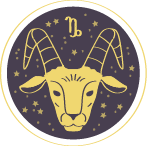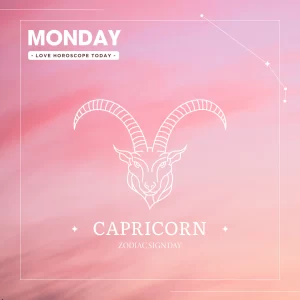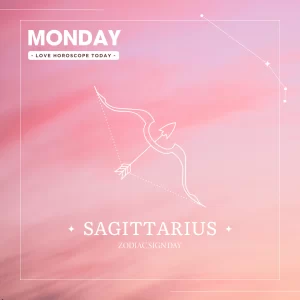
Aries is one of the constellations within the zodiac, situated in the Northern celestial hemisphere between Pisces to the west and Taurus to the east. The name “Aries” derives from the Latin word for ram, and its ancient astronomical symbol is ♈︎. This constellation was cataloged by the 2nd-century astronomer Ptolemy and continues to be one of the 88 modern constellations. Aries occupies a mid-sized area, ranking 39th in overall size, covering 441 square degrees, which is approximately 1.1% of the celestial sphere.
Aries has been associated with a ram since the late Babylonian era, though prior to that, its stars represented a farmhand in different cultural interpretations. Various cultures have incorporated the stars of Aries into distinct constellations, such as twin inspectors in China and a porpoise in the Marshall Islands. Aries is characterized as a relatively faint constellation, featuring only four prominent stars: Hamal (Alpha Arietis, second magnitude), Sheratan (Beta Arietis, third magnitude), Mesarthim (Gamma Arietis, fourth magnitude), and 41 Arietis (also fourth magnitude). Within the constellation, there are few deep-sky objects, and they tend to be quite dim, including several pairs of interacting galaxies. Aries is also associated with several meteor showers, including the Daytime Arietids and the Epsilon Arietids.
History and mythology
Aries is officially recognized as a constellation, constituting a specific region of the night sky, according to the International Astronomical Union. Originally, it was defined in ancient texts as a distinct pattern of stars and has retained its status as a constellation since ancient times. The modern concept of Aries encompasses both the ancient star pattern and the stars surrounding it.
In Babylonian zodiac descriptions found in the MUL.APIN clay tablets, Aries was the final station along the ecliptic. This comprehensive table of star risings and settings likely served as an agricultural calendar. In ancient Babylonian tradition, Aries was known as MULLÚ.ḪUN.GÁ, denoting “The Agrarian Worker” or “The Hired Man.” The MUL.APIN, created around 1000 BC, associated the Pleiades with the vernal equinox, a significant alignment during the Middle Bronze Age. The earliest known reference to Aries as a distinct constellation comes from boundary stones dating between 1350 and 1000 BC, where a zodiacal ram figure is distinguishable from other characters. The shift from the constellation representing the Agrarian Worker to the Ram likely occurred later in Babylonian tradition due to its growing association with Dumuzi the Shepherd.
In ancient Egyptian astronomy, Aries was linked with the god Amun-Ra, portrayed as a figure with a ram’s head, symbolizing fertility and creativity. As the location of the vernal equinox, it was known as the “Indicator of the Reborn Sun.” During periods when Aries was prominent, priests would conduct processions carrying statues of Amon-Ra to temples—a practice modified by Persian astronomers in later centuries. In Egypt, Aries held the title “Lord of the Head,” signifying its symbolic and mythological significance.
Aries gained recognition as a constellation primarily during classical times. In Hellenistic astrology, Aries is associated with the golden ram from Greek mythology, which rescued Phrixus and Helle on the orders of Hermes, taking Phrixus to the land of Colchis. This myth involves Phrixus and Helle, the children of King Athamas and his first wife Nephele, who were threatened by their stepmother, Ino. Ino induced famine in Boeotia, then falsely claimed that an oracle demanded Phrixus’s sacrifice to end the famine. Aries, sent by Nephele, intervened and saved Phrixus, although Helle fell into the Dardanelles, also known as the Hellespont, during their flight.
Historically, Aries has been depicted as a crouched, wingless ram facing Taurus. Ptolemy described Alpha Arietis as the ram’s muzzle, though it was not included in his constellation figure but listed as an “unformed star.” The depiction of Aries as a reclining figure was followed by John Flamsteed in his Atlas Coelestis. Astrologically, Aries is associated with the head and its humors and was strongly linked to Mars, both the planet and the god. It was believed to govern Western Europe and Syria and indicated a strong temper in individuals.
The First Point of Aries, marking the vernal equinox, is named after this constellation because the Sun crossed the celestial equator from south to north in Aries over two millennia ago. Hipparchus defined this point in 130 BC, south of Gamma Arietis. However, due to the precession of the equinoxes, the First Point of Aries has shifted into Pisces and will eventually move into Aquarius around 2600 AD. Nevertheless, Aries continues to be associated with the beginning of spring as the Sun appears within its boundaries from late April through mid-May.
Medieval Muslim astronomers represented Aries in various ways, including as a ram, similar to Ptolemy’s depiction. However, some Islamic celestial globes portrayed Aries as an indistinct four-legged animal with antler-like features instead of traditional horns. Early Bedouin observers saw a ram in another part of the sky, featuring the Pleiades as the ram’s tail. The generally accepted Arabic configuration of Aries comprised thirteen stars forming a figure along with five “unformed” stars, four located above the animal’s hindquarters and one above Aries’s head. While differing from other Arab astronomers and Flamsteed’s interpretation, al-Sufi’s depiction portrayed Aries as a running figure looking backward.
Several obsolete constellations were linked to Aries, including Apes, Vespa, Lilium, and Musca (Borealis), all centered on the northern stars. These constellations were introduced by various astronomers, but none of them gained widespread acceptance. Johann Hevelius later renamed one of these constellations “Musca” in 1690 in his Firmamentum Sobiescianum, distinguishing it from the southern fly. This constellation was subsequently renamed Musca Borealis but eventually reabsorbed into Aries, with its stars officially returned to the latter.
The International Astronomical Union designated the three-letter abbreviation “Ari” for Aries in 1922. The official boundaries of Aries were established in 1930 by Eugène Delporte, defining it as a polygon with 12 segments. Its right ascension ranges between 1h 46.4m and 3h 29.4m, while its declination falls within 10.36° and 31.22° in the equatorial coordinate system.
In non-Western astronomy
In traditional Chinese astronomy, several constellations incorporated stars from Aries. The most prominent stars, Alpha, Beta, and Gamma Arietis, were part of a constellation known as Lou , which carried various translations like “bond,” “lasso,” and “sickle.” Lou was associated with the ritual sacrifice of cattle and shared its name with the 16th lunar mansion, corresponding to the full moon closest to the autumnal equinox. Additionally, this constellation was linked to harvest time, potentially symbolizing a woman carrying a basket of food on her head. Stars 35, 39, and 41 Arietis belonged to Wei , a constellation representing a plump abdomen and giving its name to the 17th lunar mansion, associated with granaries. Delta and Zeta Arietis contributed to the constellation Tianyin , believed to depict the Emperor’s hunting companion. Zuogeng , another constellation portraying a marsh and pond inspector, featured Mu, Nu, Omicron, Pi, and Sigma Arietis. He was accompanied by Yeou-kang, representing an official responsible for pasture distribution.
In a system similar to the Chinese, the first lunar mansion in Hindu astronomy was called “Aswini,” named after the traditional designations for Beta and Gamma Arietis, known as the Aswins. Since the Hindu new year began with the vernal equinox, the Rig Veda included over 50 hymns related to the twins, making them prominent figures in the work. Aries itself was known as “Aja” and “Mesha.” In Hebrew astronomy, Aries was referred to as “Taleh” and symbolized either Simeon or Gad, often representing the “Lamb of the World.” Syrians bordering Aries named it “Amru,” while neighboring Turks called it “Kuzi.” In the Marshall Islands, stars from Aries, along with stars from Cassiopeia, Andromeda, and Triangulum, formed a constellation depicting a porpoise. Alpha, Beta, and Gamma Arietis comprised the porpoise’s head, while stars from Andromeda constituted the body, and the bright stars of Cassiopeia formed the tail. Various Polynesian cultures also recognized Aries as a constellation. The Marquesas islanders referred to it as Na-pai-ka, and the Māori constellation Pipiri may have corresponded to modern Aries. Indigenous Peruvian astronomy featured a constellation with most of the same stars as Aries, known as the “Market Moon” or “Kneeling Terrace,” serving as a reminder for the annual harvest festival, Ayri Huay.
Aries | Famous NBA players

Kyrie Andrew Irving (born March 23, 1992) is an American professional basketball player for the Brooklyn Nets of the National Basketball Association (NBA). He was named the NBA Rookie of the Year after being selected by the Cleveland Cavaliers with the first overall pick in the 2011 NBA draft. A seven-time NBA All-Star, Irving won an NBA championship with the Cavaliers in 2016.
Irving played college basketball for the Duke Blue Devils before joining the NBA. He has also played for the Boston Celtics. In addition to his club success, Irving has been a mainstay for the U.S. national team, with whom he has won gold at the 2014 FIBA Basketball World Cup and the 2016 Summer Olympics.
Kyrie Irving
(1992.3.23)
Off the court, Irving has pursued a number of personal and business interests, including acting and philanthropy. He starred in the 2018 film “Uncle Drew” and has also been involved in various charitable endeavors throughout his career.
Introduction to Kyrie Irving:
Kyrie Irving is a renowned figure in the world of basketball, known for his exceptional skills on the court and his contributions to the teams he has played for. Born in 1992, Irving quickly rose to prominence in the NBA after being the first overall pick in the 2011 NBA draft by the Cleveland Cavaliers. His agility, ball-handling, and scoring ability have made him one of the league’s top point guards. Winning an NBA championship in 2016 with the Cavaliers, Irving solidified his status as one of the game’s elite players. Apart from his basketball career, Irving is also recognized for his off-court endeavors, including acting and philanthropy. His dedication to the sport and his various pursuits outside of it make him a multifaceted individual in the world of sports and entertainment.
Related article
Pisces Love Horoscope Today – 2023.12.25
Pisces Love Horoscope Today Pisces Love Horoscope Today With Aries:...
Read MoreAquarius Love Horoscope Today – 2023.12.25
Aquarius Love Horoscope Today Aquarius Love Horoscope Today With Aries:...
Read MoreCapricorn Love Horoscope Today – 2023.12.25
Capricorn Love Horoscope Today Capricorn Love Horoscope Today With Aries:...
Read MoreSagittarius Love Horoscope Today – 2023.12.25
Sagittarius Love Horoscope Today Sagittarius Love Horoscope Today With and...
Read More







